Politics
At least 19 killed in Nepal in ‘Gen Z’ protest over social media ban
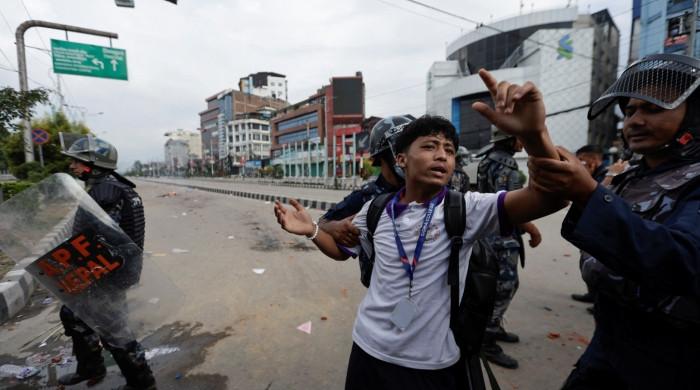
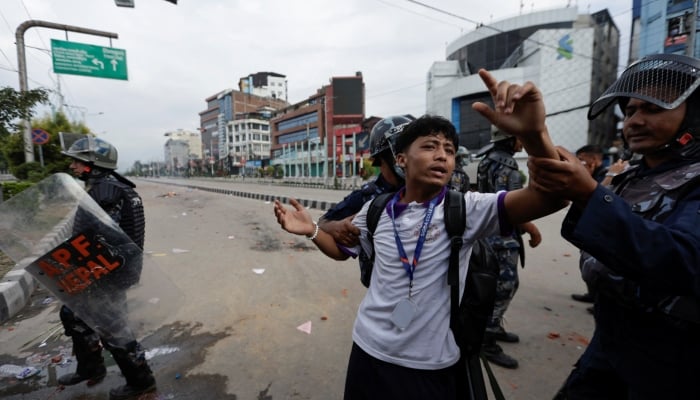
- Protests led by young held in capital and other cities.
- Demonstrators denounce social media shutdown, corruption.
- Police fire tear gas and rubber bullets at protesters.
KATHMANDU: Unrest killed at least 19 people in Nepal on Monday, authorities said, as police in the capital fired tear gas and rubber bullets at protesters trying to storm parliament in anger at a social media shutdown and corruption.
Some of the main youth protesters forced their way into the parliament complex in Kathmandu by breaking through a barricade, a local official said, setting fire to an ambulance and hurling objects at lines of riot police guarding the legislature.
“The police have been firing indiscriminately,” one protester told the ANI news agency. “(They) fired bullets which missed me but hit a friend who was standing behind me. He was hit in the hand.”
More than 100 people, including 28 police personne,l were receiving medical treatment for their injuries, police officer Shekhar Khanal told Reuters. Protesters were ferrying the injured tthe o hospital on motorcycles.
Another two people were killed when protests in the eastern city of Itahari turned violent, police said.
Prime Minister KP Sharma Oli called an emergency cabinet meeting to discuss the unrest, which erupted after thousands of young people, including many wearing their school or college uniforms, took to the streets earlier on Monday.
Many carried flags and placards with slogans such as “Shut down corruption and not social media”, “Unban social media”, and “Youths against corruption”, as they marched through Kathmandu.
Organisers of the protests, which spread to other cities in the Himalayan country, have called them “demonstrations by Gen Z”. They say the protests reflect young people’s widespread frustration with government action to tackle corruption and boost economic opportunities.
“This is the protest by the new generation in Nepal,” another protester told ANI.
A government decision to block access to several social media platforms, including Facebook, last week has fuelled anger among the young. About 90% of Nepal’s 30 million people use the internet.
Officials said they imposed the ban because platforms had failed to register with authorities in a crackdown on misuse, including false social media accounts used to spread hate speech and fake news, and commit fraud.
Batons and rubber bullets
Police had orders to use water cannons, batons and rubber bullets to control the crowd and the army was deployed in the parliament area to bolster law enforcement officers, Muktiram Rijal, a spokesperson for the Kathmandu district office, told Reuters.
He said the curfew, which will remain in force until 10 p.m. local time, had been extended to Kathmandu’s Singha Durbar area, which includes the prime minister’s office and other government buildings.
Violence abated later in the evening although protesters remained in the area outside parliament.
Police said similar protests were also held in Biratnagar and Bharatpur in the southern plains and in Pokhara in western Nepal.
Many people in Nepal think corruption is rampant, and the Oli government has been criticised by opponents for failing to deliver on its promises to tackle graft or make progress to address longstanding economic issues.
Thousands of young Nepalis go abroad every year for work and education.
Rameshwore Khanal, a former finance secretary, said although job creation is not up to expectations, popular anger appears to stem more from unhappiness with government appointments and its inability to stamp out corruption.
Nepal’s social media shutdown comes as governments worldwide take steps to tighten oversight of social media and Big Tech due to growing concern about issues such as misinformation, data privacy, online harm and national security.
Critics say many of these measures risk stifling free expression, but regulators say stricter controls are needed to protect users and preserve social order.
Politics
US mulls new Russia sanctions, urges Europe to ramp up pressure over Ukraine war
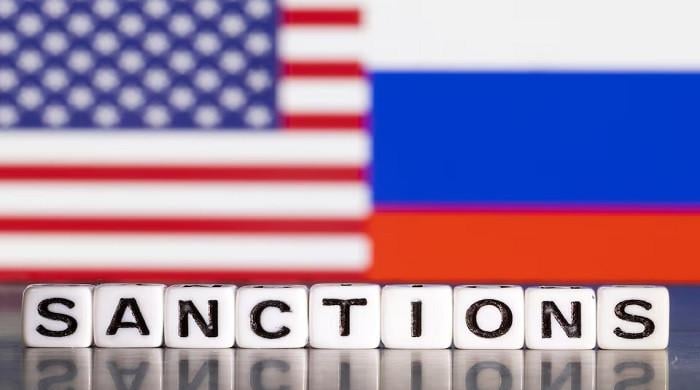
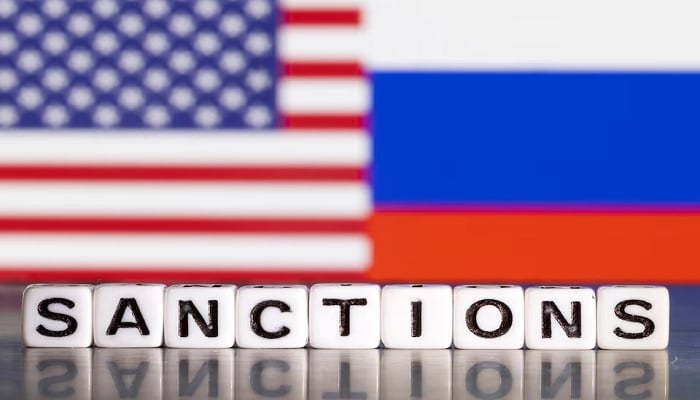
- Washington could apply more banking, oil sanctions, sources say.
- Some US officials say Trump wants Europe to make next move.
- Trump: won’t meet with Putin unless there’s a peace deal.
US President Donald Trump’s administration has prepared additional sanctions it could use to target key areas of Russia’s economy if President Vladimir Putin continues to delay ending Moscow’s war in Ukraine, according to a US official and another person familiar with the matter.
US officials have also told European counterparts that they support the EU using frozen Russian assets to buy US weapons for Kyiv, and Washington has held nascent internal conversations about leveraging Russian assets held in the US to support Ukraine’s war effort, two US officials said.
While it is not clear whether Washington will actually carry out any of those moves in the immediate term, it indicates that the administration has a well-developed toolkit to escalate further after Trump imposed sanctions on Russia on Wednesday for the first time since returning to office in January.
Trump has positioned himself as a global peacemaker, but has admitted that trying to end Russia’s more-than-three-year war in neighbouring Ukraine has proven harder than he had anticipated.
His meeting with Putin in Alaska in August failed to make progress. Trump told reporters in Doha on Saturday that he would not meet with Putin again unless a peace deal appeared likely. “I’m not going to be wasting my time,” Trump said.
European allies — buffeted by Trump’s swings between accommodation and anger toward Putin — hope he will continue to increase pressure on Moscow.
One senior US official told Reuters that he would like to see European nations make the next big Russia move, which could be additional sanctions or tariffs. A separate source with knowledge of internal administration dynamics said Trump was likely to hit pause for a few weeks and gauge Russia’s reaction to Wednesday’s sanctions announcement.
Those sanctions took aim at oil companies Lukoil and Rosneft. The moves spiked oil prices by more than $2 and sent major Chinese and Indian buyers of Russian crude looking for alternatives.
Trump said on Saturday that when he meets with President Xi Jinping on Thursday, China’s purchases of Russian oil may be discussed. But China is cutting back “very substantially” on Russian oil and “India is cutting back completely,” Trump told reporters.
Banking sector, oil, and infrastructure
Some of the additional sanctions prepared by the United States target Russia’s banking sector and the infrastructure used to get oil to market, said a US official and another person familiar with the matter.
Last week, Ukrainian officials proposed new sanctions that the US could levy, said one source with knowledge of those conversations. Their ideas included measures to cut off all Russian banks from the dollar-based system with US counterparts, two sources said. It is not clear, however, whether Ukraine’s specific requests are being seriously considered by US officials.
Some US senators are renewing a push to get a long-stalled bipartisan sanctions bill over the line. The person with knowledge of internal administration dynamics said Trump is open to endorsing the package. The source warned, though, that such an endorsement is unlikely this month.
The Treasury Department did not respond to a request for comment.
Kirill Dmitriev, Russian President Vladimir Putin’s special envoy for investment and economic cooperation, said on Friday he believes his country, the United States and Ukraine are close to a diplomatic solution to end Russia’s war in Ukraine.
Halyna Yusypiuk, Ukrainian Embassy spokesperson in Washington, said the recent sanctions decision was appreciated, but did not otherwise comment.
“Dismantling Russia’s war machine is the most humane way to bring this war to an end,” Yusypiuk wrote in an email.
A week of whiplash
Trump’s decision to hit Russia with sanctions capped a tumultuous week with respect to the administration’s Ukraine policy.
Trump spoke with Putin last week and then announced the pair planned to meet in Budapest, catching Ukraine off guard.
A day later, Trump met with Ukrainian President Volodymyr Zelenskiy in Washington, where US officials pressed Zelenskiy to give up territory in the Donbas region as part of a lopsided land swap to end the war. Zelenskiy pushed back, and Trump left the meeting with the position that the conflict should be frozen at its frontlines.
Then last weekend, Russia sent a diplomatic note to Washington reiterating previous peace terms. A few days later, Trump told reporters the planned meeting with Putin was off because “it just didn’t feel right to me.”
Speaking to CNN on Friday after arriving in Washington for talks with US officials, Dmitriev said a meeting between Trump and Putin had not been cancelled, as the US president described it, and that the two leaders will likely meet at a later date.
Two US officials argued privately that, in hindsight, Trump’s abortive plan to meet with Putin was likely the fruit of irrational exuberance. After sealing a ceasefire in Gaza, those officials said, Trump overestimated the degree he could use momentum from one diplomatic success to broker another one.
Trump ultimately decided to slap Russia with sanctions during a Wednesday meeting with Treasury Secretary Scott Bessent and Secretary of State Marco Rubio, a senior White House official said.
Politics
Dubai to launch floating arts museum
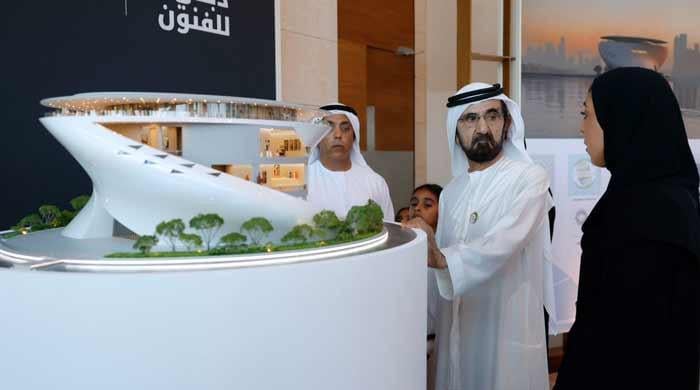
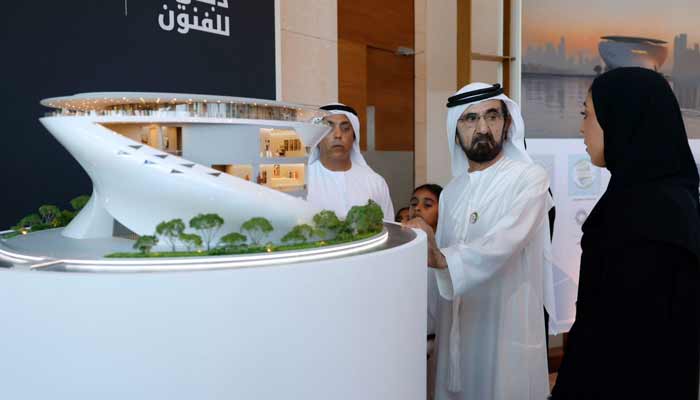
DUBAI: The city of superlatives is preparing to add another landmark to its skyline — one that will quite literally float.
The Dubai Arts Museum (DUMA), announced by Sheikh Mohammed bin Rashid Al Maktoum, vice president and prime minister of the UAE and ruler of Dubai, is set to rise on an island in the heart of Dubai Creek.
Unlike conventional museums anchored on land, DUMA’s design incorporates the waters of the creek into its architectural identity. The museum, conceived by world-renowned Japanese architect Tadao Ando, aims to merge minimalist modernism with Dubai’s vibrant cultural narrative.
Sheikh Mohammed described the project as “a mirror of Dubai’s artistic identity and cultural spirit,” emphasising its role in shaping the city’s creative ecosystem.
By floating on the creek, DUMA is not just a museum, but a symbolic statement of Dubai’s ambition to redefine how art interacts with urban space.
The project is being delivered in partnership with Emirati businessman Abdullah Al Futtaim and his son Omar Al Futtaim, highlighting a collaboration between the public and private sectors.
Sheikh Mohammed described their involvement as “a bright example of how private enterprise can contribute meaningfully to the city’s cultural and creative economy.”
Officials indicate that DUMA will host a mix of contemporary and classical art, while its architecture will allow the museum to function as a public space, promenade, and cultural hub, providing residents and visitors with a unique vantage point of Dubai Creek.
Construction is expected to begin later this year, with completion projected within three years.
Politics
Early voting begins in NY mayoral race dominated by Trump foe Mamdani
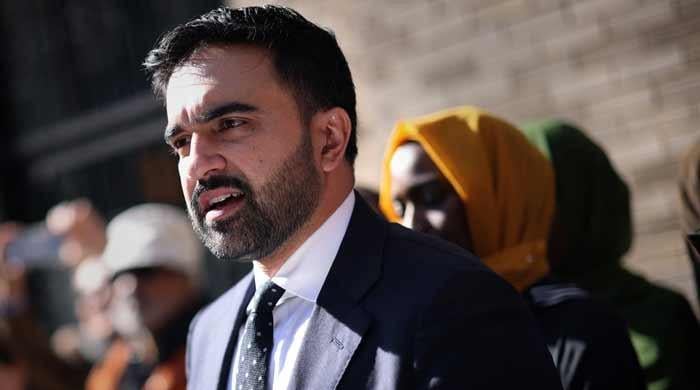
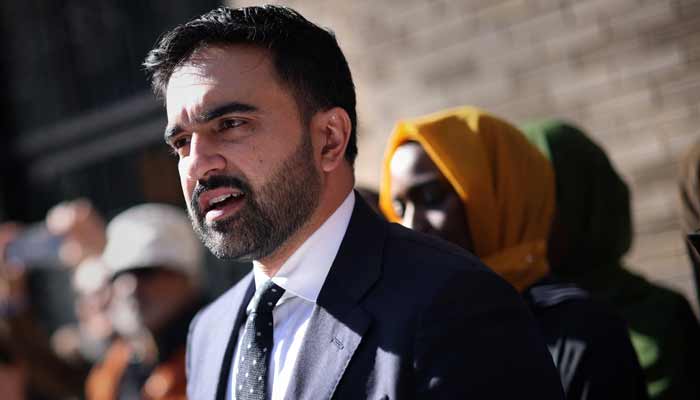
- Early voting to continue until November 2.
- Mamdani has 47% New Yorkers’ support.
- Lawmaker top Democrat endorses Mamdani.
Early voting for New York’s next mayor begins Saturday with an outsider Democratic Party candidate the favorite to upend the city’s politics and face down President Donald Trump, who has repeatedly attacked him.
The twisting race has seen state lawmaker Zohran Mamdani, a self-described socialist, surge from the political wilderness to become the frontrunner in a campaign in which the current mayor bowed out and the onetime Democratic favorite lost his own primary.
The 34-year-old Mamdani’s once unlikely campaign has been turbo-charged by eager campaigning by young New Yorkers in particular.
An emphasise on the soaring cost of living has also resonated, with the Queens-based lawmaker promising to freeze rent for two million New Yorkers in rent-stabilised properties.
In the latest twist, scandal-tainted current mayor Eric Adams backed the second-place candidate, 67-year-old former state governor Andrew Cuomo — after previously calling him a “snake and a liar.”
Early voting allows New Yorkers to cast a ballot from Saturday until November 2, with Election Day on November 4 and the winner taking office in the New Year.
Mamdani had 47% support and led Cuomo by 18 points in the latest citywide poll, conducted by Victory Insights between October 22 and 23. Republican candidate Curtis Sliwa, 71, was at 16%.
Adams, who has been mired in corruption allegations linked to his term in office, dropped out of the race on September 28 but did not initially endorse a rival.
“You can’t freeze rent, but you are lying and telling people you could — we’re fighting against a snake oil salesman,” Adams said Thursday with Cuomo at his side.
“Gentrifiers have raised the rent in the city… and (Mamdani’s) the king of the gentrifiers.”
It is unclear what impact Adams’s endorsement will have on the race.
“It is possible, but extremely unlikely, Cuomo can catch Mamdani,” said Lincoln Mitchell, a political science professor at Columbia University, saying the former governor’s “tough guy persona” dates from another era.
‘Affordability crisis’
The race has been dominated by the issue of cost of living, as well as by how each candidate would handle Trump, who has threatened to withhold federal funds from the city where he made his name as a property developer and reality TV star.
Trump has branded Mamdani, who wants to make bus travel and childcare in the city of 8.5 million people free, a “communist.”
“I was always very generous with New York, even when you had opposition there,” Trump said this month.
“I wouldn’t be generous to a communist guy that’s going to take the money and throw it out the window.”
Mamdani has said he would cooperate with Trump if it brought down the cost of living in the city, while Sliwa has said he would seek to “negotiate” with the president and Cuomo has said he would “confront” the commander-in-chief.
“I’ve lived in New York for 10 years almost. I’ve always been… not necessarily always struggling, but trying to hustle and get things together,” Mamdani supporter and tenant organiser Lex Rountree, 27, told AFP.
“It feels strange to kind of think about what it would look like to have some of that ease” under Mamdani, Rountree added.
Mamdani’s campaign received a lift on Friday when Hakeem Jeffries, a New York lawmaker and the top Democrat in the US House of Representatives, endorsed him.
“Mamdani has relentlessly focused on addressing the affordability crisis and explicitly committed to being a mayor for all New Yorkers, including those who do not support his candidacy,” the leading Democrat said.
Mamdani will bring star firepower to the table Sunday when he appears alongside leftist Senator Bernie Sanders and lawmaker Alexandria Ocasio Cortez at a “get out the vote” rally in Forest Hills Stadium in Queens.
-

 Tech6 days ago
Tech6 days agoHow to Protect Yourself Against Getting Locked Out of Your Cloud Accounts
-
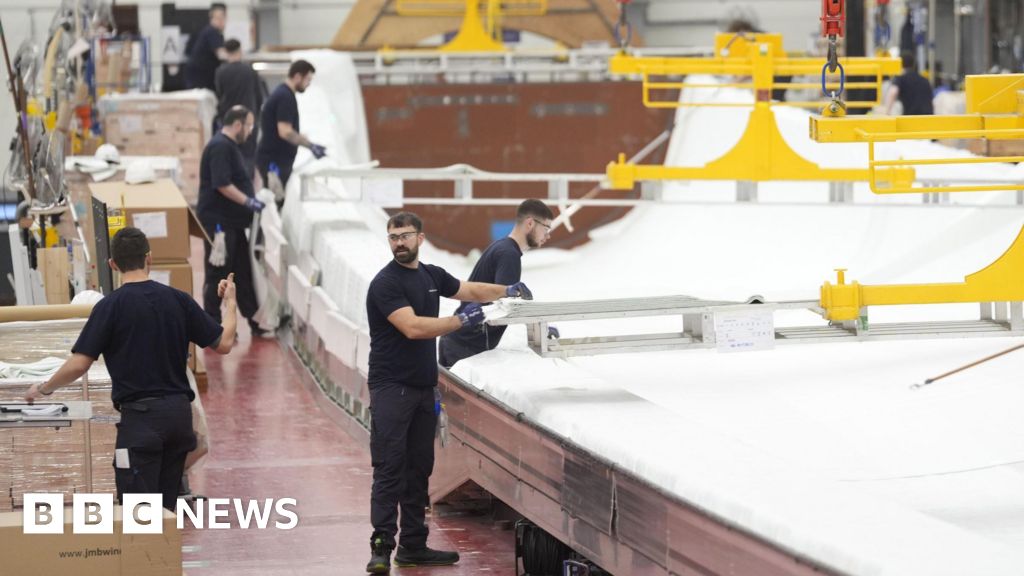
 Business7 days ago
Business7 days agoGovernment vows to create 400,000 jobs in clean energy sector
-

 Tech7 days ago
Tech7 days agoThe DeltaForce 65 Brings Das Keyboard Into the Modern Keyboard Era—for Better or Worse
-

 Tech1 week ago
Tech1 week agoI Tested Over 40 Heat Protectant Sprays to Find the Best of the Best
-

 Sports1 week ago
Sports1 week agoPCB confirms Tri-nation T20 series to go ahead despite Afghanistan’s withdrawal – SUCH TV
-

 Tech1 week ago
Tech1 week agoThe Best Part of Audien’s Atom X Hearing Aids Is the Helpful, High-Tech Case
-
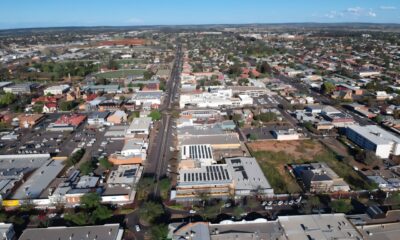
 Tech1 week ago
Tech1 week agoSome major Australian towns still have poor phone reception—it’s threatening public safety
-

 Business7 days ago
Business7 days agoDiwali 2025: Gold & silver likely to consolidate next week; Here’s what analysts said – The Times of India





